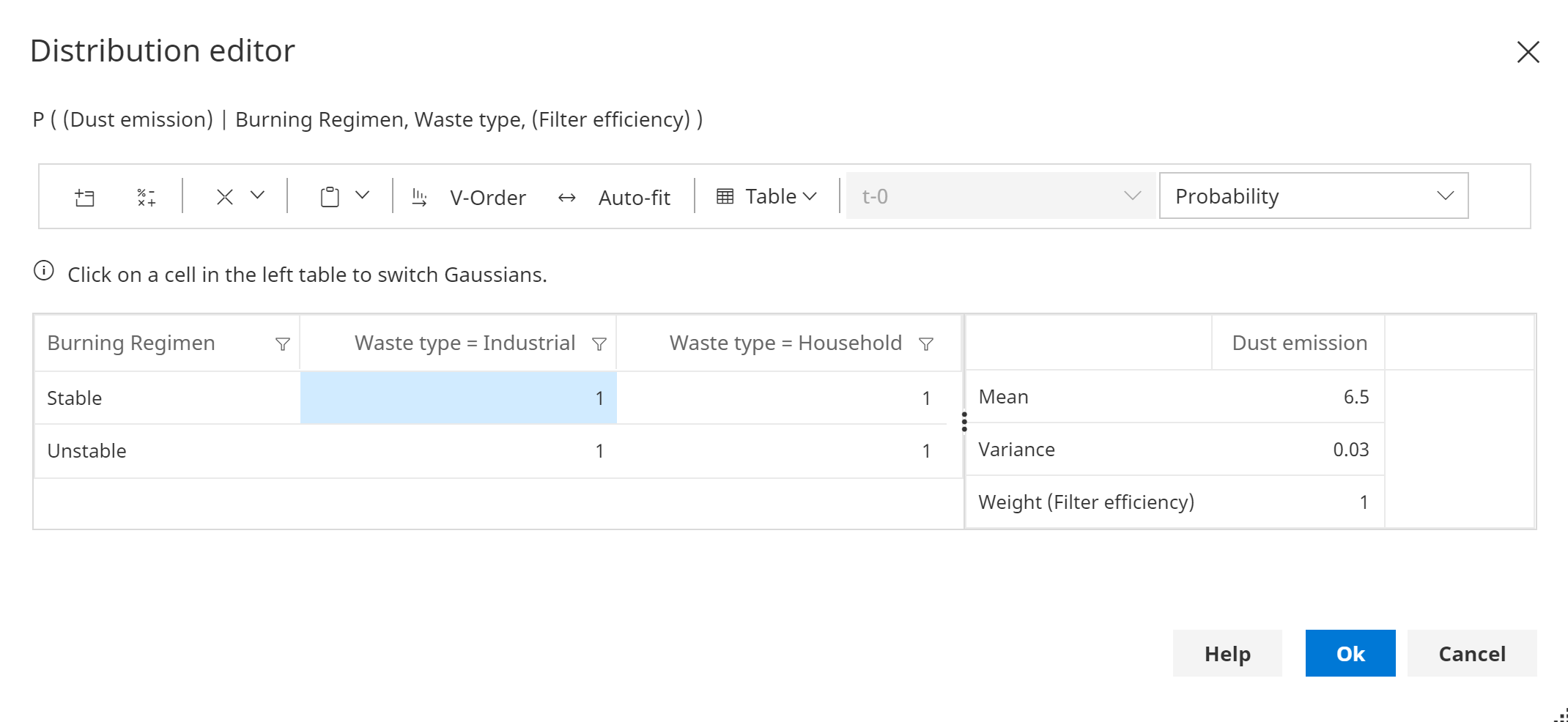Distribution editor
Introduction
Each node in a Bayesian network requires a probability distribution to be specified, conditioned on its parent nodes.
So for a node A, with parents B,C the distribution to be specified is P(A|B,C)

Creating new distributions
If a node does not have a distribution assigned, click the New Distribution button to create one.
Editing distributions
Once a distribution has been created for a node, numeric values can be entered in the grid to define the distribution.
For nodes with discrete variables, enter probability values, such that each parent combination sums to 1.
Random values can be assigned, ensuring that each parent combination sums to 1, by clicking the Randomize button.
For continuous distributions, enter means/intercepts, covariances, and weights (regression coefficients).
Counts/frequencies can also be entered, and then normalized to probability values by clicking the Normalize button.
Deleting Distributions
If a node has a distribution assigned, the Delete Distribution button removes it, leaving a null distribution.
Continuous Distributions
Continuous distributions in Bayes Server are represented by Conditional Linear Gaussian (CLG) distributions.

If a continuous node has any discrete parents, then the probability table on the left allows selection of the Gaussian distribution that corresponds to the discrete combination selected.
V-Order
Version 10 or later
You can change the order in which parameters are displayed/edited.
This can be used in conjunction with re-ordering columns.
For example, you might want to display/edit variables A, B and C in this order:
| A | B |
|---|---|
| False | False |
| False | True |
| True | False |
| True | True |
Alternatively, you might want to display/edit the same distribution in this order:
| A | C |
|---|---|
| False | False |
| False | True |
| True | False |
| True | True |
Being able to change the V-Order is particularly useful when you want to copy and paste from another distribution or another application that represents variables in a different way.
Transpose
If you want to copy and paste data into the editor, and you find you data is laid out differently, consider using one or more of the following:
- You can change the V-Order described above.
- You can drag the columns to re-order them (this is different to the V-Order)
- You can transpose your data in a tool like Excel, to ensure it is in the correct layout before pasting.
Expressions
A distribution can be defined using a Table Expression.
When an expression is present, the related distribution cannot be edited. However, if required, you can delete the expression, leaving the distribution intact, which can then be edited.
DBN Distributions
Nodes in a Dynamic Bayesian network (DBN), can have multiple distributions, that correspond to different times.
Each distribution can be selected by changing the Time drop down.
Noisy distributions
Noisy nodes typically require more than one distribution to be specified. For more information see Noisy Nodes.
Multi-variable nodes
Distributions are made up from variables, not nodes. If nodes contain single variables, then nodes are equivalent to variables.
However, if nodes contain multiple variables, then the distribution required contains the variables in the node, conditioned on
the variables in the parent nodes. In the example above, if node A contained the variables {A1,A2},
B contained {B1,B2} and C contained just {C1} then the distribution required
for node A would be P(A1,A2|B1,B2,C1).